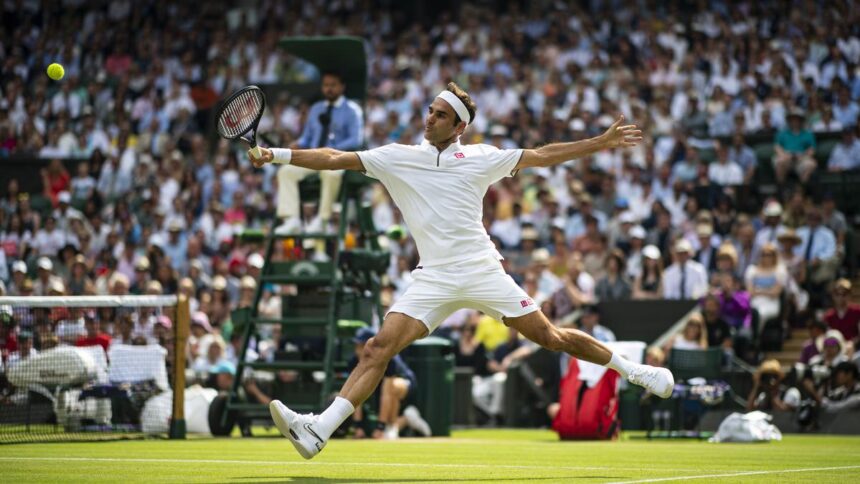Whether an athlete blocks a shot in basketball, lands a counterpunch in boxing, or hits a pitch in baseball, he needs excellent timing. In fact, this fundamental skill is critical in almost every sport. And none more so than in tennis, where every shot requires contacting a moving ball with precision while almost always on the run, except when serving. Precise timing generates power, ensures accuracy, and increases consistency.
World-class tennis players make timing the most difficult shots look easy. In addition to their superb athleticism, elite coaching, and intensive practice, they understand the keys to great timing. Let’s review the basics as well as the fine points of tennis timing. Then you can evaluate your timing and identify areas where you can improve.
Adjust your timing to the existing conditions
Note the weather conditions: The speed and direction of the wind, the temperature, the humidity, and precipitation (if any). Determine how each of these variables affects your timing and adjust your timing accordingly. Given that the narrowness of a singles court is 27 feet (8.23 metres) compared to several other sports — especially the expansive, diamond-shaped baseball field — a shot contacted too early or late can easily land outside the singles sideline in the doubles alley for an error.
Wind poses the most common and vexing timing challenge. Note the speed, direction, and consistency of the wind. When the wind is with your opponent, shorten the backswing on your groundstrokes and make your volleys even more compact. Otherwise, a late swing often results in an error, because your margin of error is much smaller on very windy days.
Conversely, press your advantage when the wind is at your back. You have more time to attack with topspin groundstrokes; you can overpower one-handed backhands; and your kick serves will bounce higher, and your slice serves will swerve wider. But beware of your opponent’s weak, underspin, mishit, or fluke shots that land in the forecourt and are held up or buffeted by the wind. These oncoming balls can prove tricky if you misjudge and then mistime them.
Finally, lateral winds, especially gusts, can blow a ball out of your reach or in too close to your torso. They force you to realign your position quickly to try to contact the ball in the ‘strike zone’. Just as important, lateral winds require you to shorten your backswing and hit ‘through the ball’ as much as possible to control the shot. To that end, respect the percentages and go for less power and placement to reduce your errors.
Note the speed, levelness, and uniformity of the surface: All other things being equal, the faster the surface, the less time you have to run and hit the ball. A tilted surface changes the angle of incidence of the bounce. And a heavily used clay court, a worn-down grass court, and a cracked hard court will produce uneven and unpredictable bounces that can disrupt your timing. The solution is to move your feet more than normal. Take small steps with a wide stance (each foot moving a small distance from its previous position) to adjust for strange bounces and to maintain a stable platform to support your shot. Note the speed of the ball and estimate how much the balls slow down and bounce lower — either by losing compression, becoming fluffy, or getting cold or wet — during the match. Make sure to modulate your swing so you keep the correct contact point, rather than hit the ball in front of it.
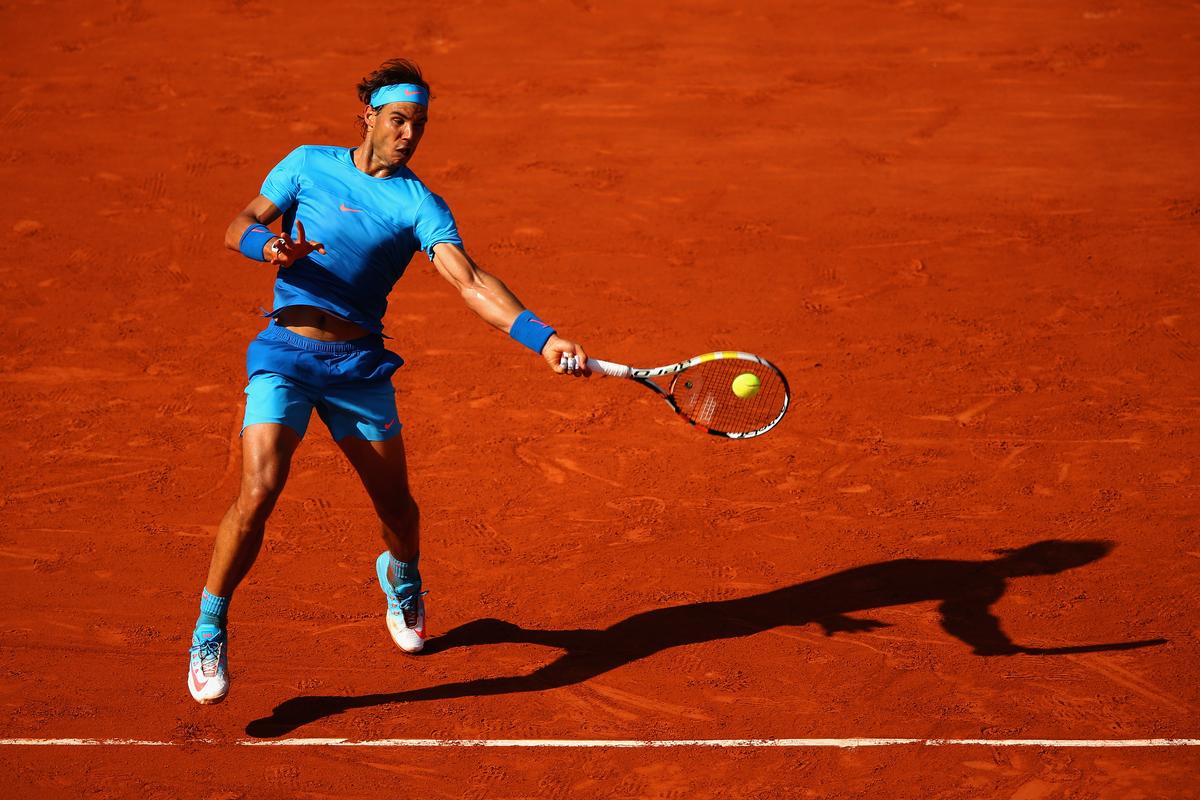
Mystery man: Every opponent, except perhaps Novak Djokovic, had trouble timing Nadal’s ferocious, topspin lefty crosscourt forehands.
| Photo Credit:
Getty Images
Mystery man: Every opponent, except perhaps Novak Djokovic, had trouble timing Nadal’s ferocious, topspin lefty crosscourt forehands.
| Photo Credit:
Getty Images
Let your senses guide your timing
Watch the ball intently and as long as possible: Roger Federer was renowned for turning his head on groundstrokes as the ball came within a yard of his contact point so that his eyes stayed focused on the ball through the contact point. He also kept his head still, further aiding his sighting. As a result, the 20-time Major champion timed the ball exceedingly well and could adjust quickly to any abrupt or unpredictable late changes in the flight of the ball. Similarly, the best servers like Serena Williams and Carlos Alcaraz keep their heads up as long as possible to watch the ball for as long as they can.
Listen to the sound of your opponent’s shot: Evaluate the solidity of it to help determine its speed and spin. Then adjust your timing accordingly. Your vigilant, experienced eyes can often tell when your opponent’s shot is contacted outside the ‘sweet spot’ and thus will produce less power and perhaps an unpredictable spin.
Know where you’re positioned on the court when you hit the ball: In my 2021 instruction book, The Fein Points of Tennis, I wrote about the ‘sixth sense’: “When hitting shots on the run, world-class competitors have a sixth sense that tells them exactly where they’re positioned. In sharp contrast, recreational players lack this court awareness and, as a result, often hit the wrong shot or err.”
This positional awareness applies to returning short shots, deep shots, angle shots, and most importantly, wide shots. When your opponent forces you to hit the ball from outside the singles sideline (or even beyond the doubles sideline) for a passing shot or a go-for-broke down-the-line winner, strike the ball earlier, thus more in front of your usual contact point to keep your shot in the court. Rafael Nadal, the legendary King of Clay, exemplified perfect forehand timing in these two sprinting scenarios.
Understand how stroke technique affects timing
Note the ideal contact point for each stroke: For example, the contact point for a one-handed backhand is about six inches farther in front and thus comes earlier than for a two-handed backhand. Also, the contact point for the Western forehand is farther in front of the body than the semi-Western forehand; and the contact point for the semi-Western forehand is farther in front than that of the Eastern forehand. The contact point for crosscourt forehands and backhands is more in front and thus comes earlier than for their down-the-line counterparts. The timing for power volleys differs greatly from that of drop volleys. Power volleys are struck with your hitting arm fully extended and far in front of your body. Conversely, drop volleys are contacted with your hitting arm bent — with a much looser grip (softer hands) and a more bevelled racket face — as the ball comes beside your body. The location of the contact point also varies with its height. High contact points are farther away from the torso than low contact points are.
Adjust the length of the backswing based on how much time you have: Andre Agassi’s impeccable timing was honed between the ages of three and 13 by hitting an estimated million balls a year that were fired at him at up to 110 miles per hour by the ball machines that his father used in their Las Vegas backyard. “All you really need to succeed at tennis is fast eye-hand coordination,” Emmanuel ‘Mike’ Agassi said in the 1993 biography, AGASSI. Indeed, Andre’s short groundstroke backswing and extremely short serve return backswing evolved as a survival mechanism.
As a result, Agassi rarely contacted the ball early or late. The eight-time Major champion once averred that the correct contact point was the most important aspect of winning tennis. In today’s speedier game, the shorter the backswing, the better, provided you generate power primarily with the legs, hips, torso, and shoulders. Outstanding younger players execute forehands without the head of the racket ever passing behind the plane of the front of their bodies. And this is almost the case for backhands.
Study the spin of the ball and determine how the topspin, underspin, or sidespin of your opponent’s shot affects your timing: Extreme spins can bedevil even the most talented and experienced players. For example, every opponent, except perhaps Novak Djokovic, had trouble timing Nadal’s ferocious, topspin lefty crosscourt forehands. These diabolical shots bounced fast, high, and away from opponents. Andy Roddick likened their relentless lethality to ‘Chinese water torture’. Late in his career, Federer switched to a larger (97-sq.-in.) racket head with a bigger ‘sweet spot’ to hit the ball more solidly and reduce off-centre mishits.
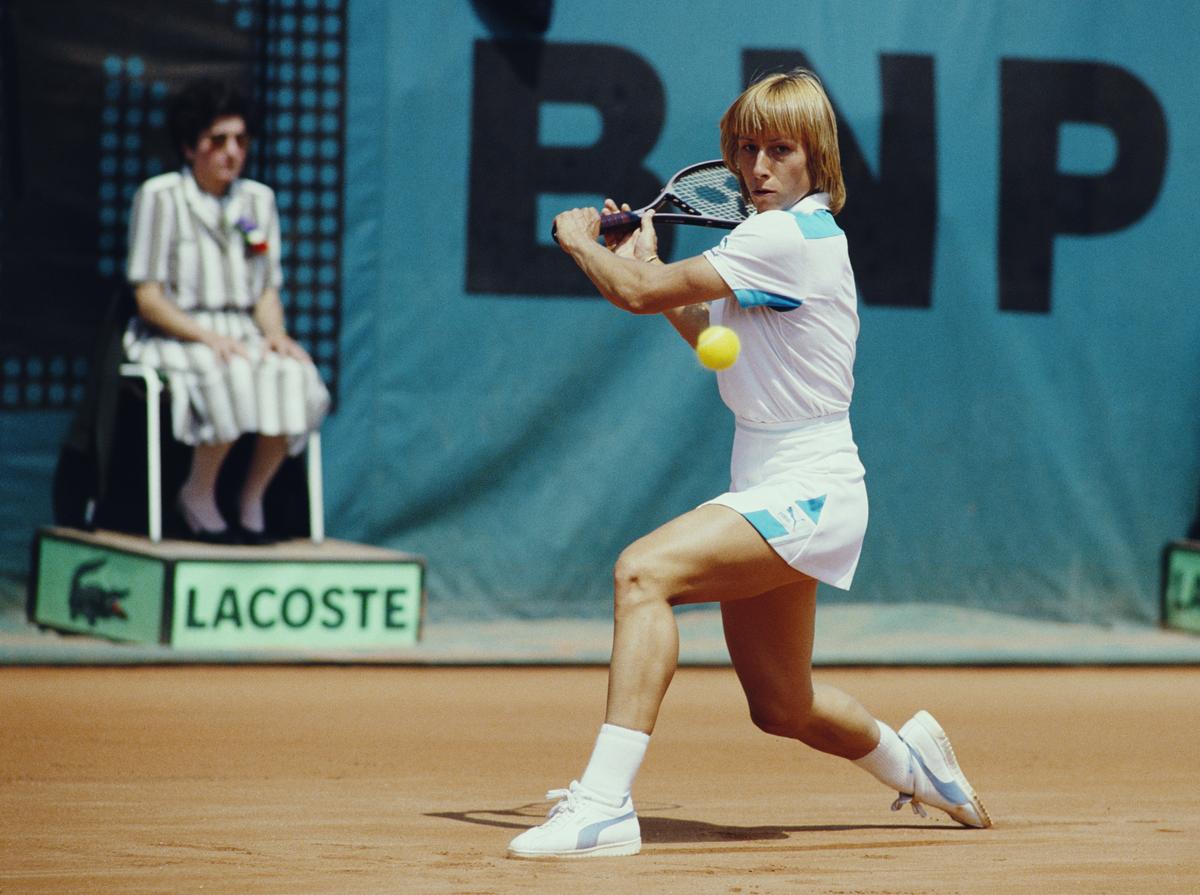
Martina Navratilova’s slice serve had stymied Steffi Graf, pulling her one-handed backhand wide in the ad court and setting up the American’s incomparable volley.
| Photo Credit:
Getty Images
Martina Navratilova’s slice serve had stymied Steffi Graf, pulling her one-handed backhand wide in the ad court and setting up the American’s incomparable volley.
| Photo Credit:
Getty Images
While Federer couldn’t counteract Nadal’s topspin forehand on clay, teenager Steffi Graf overcame a different ‘spin’ challenge against another sinistral superstar, Martina Navratilova, on grass. Navratilova’s slice serve had stymied Graf, pulling her one-handed backhand wide in the ad court and setting up the American’s incomparable volley. Graf, an intense perfectionist, figured out the low, swerving trajectory of Navratilova’s serve in the 1988 Wimbledon final, broke it eight times, and dethroned her 5-7, 6-2, 6-1. Study the flight of the ball and experiment with different court positions and spins of your own so you can effectively counter extreme spins. This technical and timing challenge requires countless hours of practice until the required adjustments become habitual.
Racket head speed can rescue you: To handle oncoming balls that arrive faster than you’ve anticipated or that you initially misjudge, accelerate your racket head speed while keeping your swing as smooth and coordinated as possible. In emergencies, use your wrist on your forehand to ‘flick’ the shot like a wristy squash shot.
However, you can significantly alleviate this problem in the first place by early, efficient preparation. Knowledgeable tennis coaches and teaching professionals inculcate the ‘Hit-Turn’. With this method, students turn immediately after their opponent contacts the ball and then move towards the ball in this position. Most shots require a hitting position. This position accomplishes two things: first, it allows the player to hit powerful shots or to shorten their stroke to deal with fast balls. Second, it immediately completes much of the racket’s path, leaving the player with more time to deal with the oncoming shot. Players can pause in the hitting position or simply slow down before completing the stroke. If a player is late getting into — or passing through — the hitting position, their only option may be to speed up their stroke, which makes errors more likely.
Improve your footwork to improve your timing
A properly timed and correctly executed split step is essential for excellent ball timing, stresses BJ Miller, a biomechanics expert on the split step in tennis: “The split step is the first move in executing a shot,” said Miller. “Often characterised as a single, instantaneous move, it actually has parts: the take-off, the flight, the touchdown, and the knee flex after touchdown. “The split step has four purposes: 1) It allows players to come into balance. 2) It results in a flexing of the knees to produce a forceful first move to the ball. 3) It results in storage of elastic energy in the player’s legs to make the first move to the ball even more forceful. 4) It allows a player to make their first move towards the oncoming ball as soon as the player detects the ball’s direction, roughly 0.2 seconds.
“The height of the split step should be approximately three inches,” continued Miller. “Much higher split steps take too much time. The knees should be flexed at least 70° — the angle of the front of the lower leg to the front of the thigh — just before landing to get the maximum push-off for the first move to the oncoming ball. Upon landing, the knees should flex somewhat more so the total knee flex is at least 70°. The landing should occur at the instant of the opponent’s ball contact. The direction of the oncoming ball can be detected in roughly 0.2 seconds which is, fortuitously, roughly the duration of the after-landing knee flex. Therefore, the first move to the ball can be initiated roughly 0.2 seconds after the opponent hits it.”
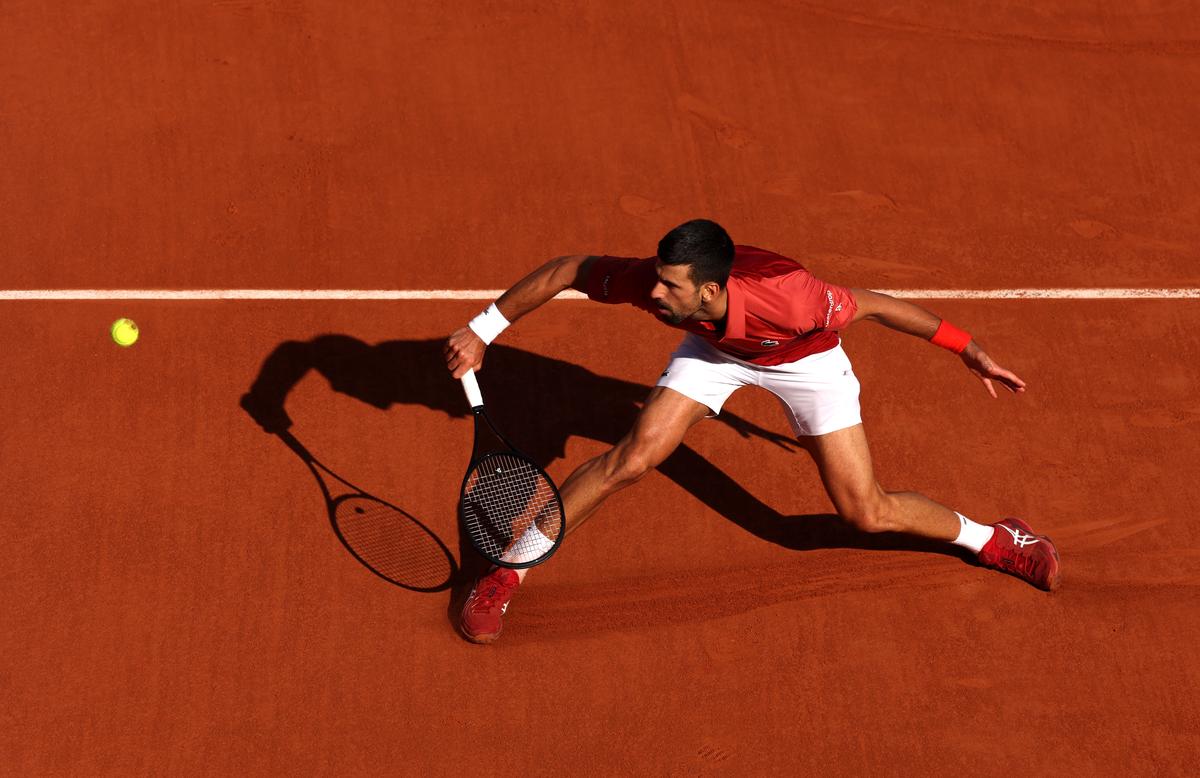
Smooth operator: Rigorous training, starting at an early age, has enabled top sliders like Novak Djokovic to move confidently and effortlessly.
| Photo Credit:
Getty Images
Smooth operator: Rigorous training, starting at an early age, has enabled top sliders like Novak Djokovic to move confidently and effortlessly.
| Photo Credit:
Getty Images
Arrive with a well-timed, controlled slide: Rigorous training, starting at an early age, has enabled today’s top sliders to move confidently and effortlessly. From Bjorn Borg and Guillermo Vilas in the 1970s to Nadal and Alcaraz this century, clay-court champions have mastered the art of sliding. As these maestros slide and glide towards the oncoming ball, their movement then links with and helps initiate their body’s kinetic chain, which unleashes energy for their groundstrokes.
Rick Macci, who coached superstars Serena and Venus Williams during their formative years, defines sliding as “a controlled mechanism to slow you down to establish better balance before hitting the ball.” No matter how athletic and agile you are, you need specific skills to slide correctly. “When you run laterally for a forehand, you slide with your right foot, and your left (back) foot serves as a rudder or braking action,” explains Macci. “The speed of the ball and the distance you have to cover dictate the timing of the slide. Like a baseball runner sliding into second or third base, if you misjudge the distance and start your slide too early, you’ll arrive late. Conversely, if you start your slide too late, you’ll arrive off balance, and that jarring ending will disrupt and ruin the timing of your shot.”
“Coaches should teach sliding step by step by hand-feeding and then, during gradually more difficult rallies,” advises Macci. “Like anything else in tennis, sliding takes practice and trial-and-error experience. If you learn to slide, you’ll enjoy the ride.”
Strive for the early and optimal position of your body relative to the ball: Hitting the ball in the ‘strike zone’ with excellent balance allows for timing the ball much easier. Dr. Mark Kovacs — a sports technology expert and physiologist who directed the Sport Science, Strength & Conditioning and Coaching Education departments for the USTA during 2008–11 — stresses footwork timing as a key to timing the oncoming ball. “When you’re timing the footwork, you’re trying to get your body in the right position and optimise your load parameters so you can release your energy most effectively,” Kovacs said.
“If you don’t time the rhythm aspect of what you’re doing correctly, then you’re going to be out of sync and you’re not going to load effectively. So, you definitely want to utilise the oncoming ball to set your feet, rotate your hips, load effectively, and then transfer your energy in the simplest, most efficient way possible.” Similarly, Macci, a seven-time United States Professional Tennis Association ‘Coach of the Year’, said, “Some players mistime the ball because of improper footwork patterns to set up in relationship to the ball. Specifically, I’m referring to little adjustment steps to get on balance and also setting up behind the ball to get the proper angular momentum into the shot.”
The ability to improvise is critical: “When some players are off balance or slightly out of the optimal position, they are so ‘cookie-cutter’ or inflexible that they cannot improvise to time the ball correctly,” notes Macci. “An effective footwork remedy is to think of tennis as a dance, and you prance to get into a flow. Tennis movement on many shots is like a rhythmic dance. So stay light on your feet and coordinate your feet with the ball. Arthur Ashe said foot-eye coordination is more important than hand-eye coordination in tennis. I recommend a rhythmical ‘drop hit’ drill. Take the ball, drop it, and, as it bounces up, hit it about hip height. Say ‘1-2, 1-2, dah, dah’ silently or out loud. This basic drill will reprogramme your muscle memory.”
Use other remedies to master timing
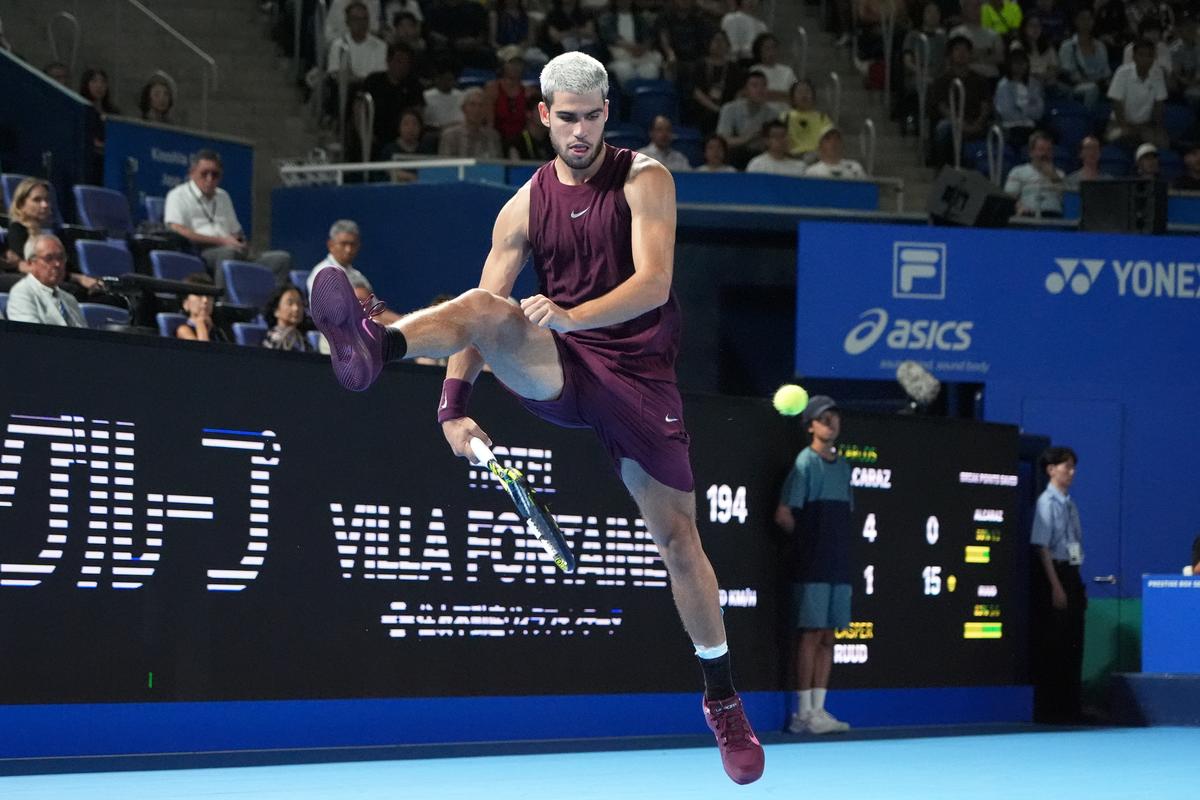
Fluid mechanics: According to coach Rick Macci: “An effective footwork remedy is to think of tennis as a dance, and you prance to get into a flow. Tennis movement on many shots is like a rhythmic dance. So, stay light on your feet and coordinate your feet with the ball.”
| Photo Credit:
Getty Images
Fluid mechanics: According to coach Rick Macci: “An effective footwork remedy is to think of tennis as a dance, and you prance to get into a flow. Tennis movement on many shots is like a rhythmic dance. So, stay light on your feet and coordinate your feet with the ball.”
| Photo Credit:
Getty Images
Nervousness can throw off your timing: ‘Getting the elbow’, the old-fashioned expression for choking, refers to decelerating — rather than accelerating — the arm through ball contact. This indecisive, slow swing usually results in a loss of ball control. Another tell-tale sign of nerves is not moving your feet. Mary Laver, the wife of double Grand Slammer Rod Laver, knew ‘Rocket’ was in trouble when he didn’t have ‘happy feet’, meaning lively, moving feet. “Even if some players are in the right position, they can get tight, and that can ruin their timing,” says Macci. “Players with flaws in their stroke technique suffer most when the match pressure increases. When their strokes break down, their timing worsens. If the culprit is nervous, smile when you hit the ball. Alcaraz says smiling on the court is the secret of his success.”
Learn the secrets of great timing from other sports: For example, watch baseball batters in the on-deck circle ‘time’ their practice swings as they watch the pitcher throw the ball to the batter.
Similarly, tennis players should use specific drills to hone their timing. Figure out what disrupts your timing — fast balls, net rushers, slow balls in the wind, change-of-pace balls, topspin, slice, and sidespin balls, or slow courts. Focus on these disrupting shots and difficult conditions in rigorous practices. Then you can handle them more confidently and decisively in tournaments.
Hone your timing with a ball machine that fires balls at different speeds and with various spins, trajectories, and placements: Start with no ball variation, both to warm up and groove your strokes and footwork. Set the machine at 50 to 60 miles per hour with balls that land halfway between the service line and baseline and halfway between the sidelines. Then, have the machine increasingly and unpredictably vary the ball’s speed, spin, trajectory, and direction.
If you’re looking for state-of-the-art features not provided by traditional, stationary ball machines, try smart/AI-powered machines. Tennibot Partner, a robotic ball machine, moves around the court to simulate game-like rallies, and offers AI-powered targeting, built-in tracking, custom drills and an app. Not to worry if you’re exhausted after these Tennibot workouts. The same company sells another robot called the Rover, which picks up the balls.
Use video analysis to optimise your shot timing: Carlos Santos, who coached current world No. 1 Alcaraz from age five to 12, revealed in the new book, Being Carlos Alcaraz: The Man Behind the Smile, that GoPro cameras accelerated his tennis education. After practice, they watched the footage together. “Carlos learnt a lot visually,” said Santos. “By the time he was just six or seven, his technique was perfect.” Warren Spahn, the Hall of Fame baseball pitcher, once observed, “Hitting is timing. Pitching is upsetting timing.” Tennis presents a similar battle between the server and the returner, but so much more tests your timing — at fast speeds, with assorted spins, and for hundred more shots during a match.
Relish these battles. Use these keys to develop your timing. As your shots improve, you’ll enjoy tennis more and win more matches than ever.
Published on Oct 10, 2025
Nguồn: thehindu

